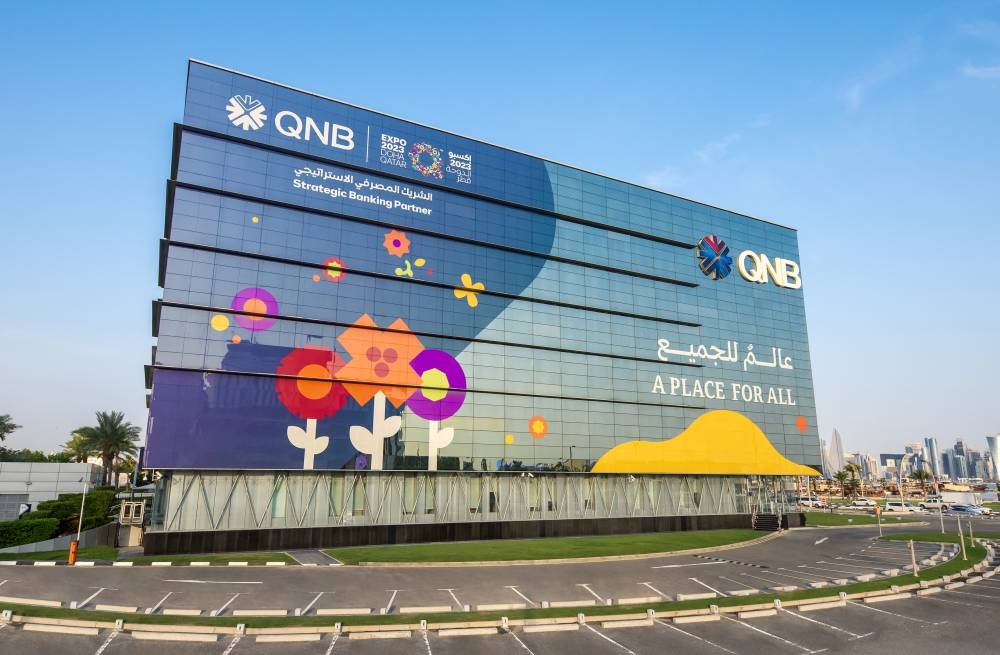Qatar National Bank (QNB) expects China to achieve strong economic growth this year, supported by the Chinese government's commitment to achieving stronger growth rates, greater flexibility in monetary policy for interest rate reductions, and a more supportive global manufacturing cycle. These factors collectively contribute to economic expansion, aiming to achieve a growth rate close to the official target of 5 percent.
According to QNB's weekly report, economic stimulus measures will support moderate growth rates in China during the current year. The report notes the prevailing pessimism among investors, economists, and analysts regarding China's performance, as reflected in Bloomberg's consensus forecast of tepid growth reaching 4.6 percent in 2024. This is 60 basis points lower than the growth achieved in 2023 and 140 basis points below the country's long-term growth average.
The report mentions that these forecasts come after a period of negative headwinds for China, including a sudden loss of momentum following the final wave of the pandemic in 2022, a real estate crisis, subdued economic stimulus policies, a deep global manufacturing recession, and private sector uncertainty due to strict regulatory constraints on innovative companies.
Furthermore, despite the headwinds and negative expectations, there is room for moderate optimism about China's economic growth. The report identifies three factors supporting achieving growth rates higher than expectations, reaching around 5 percent in 2024.
The first of these factors is the recent announcement by the Chinese government that achieving 5 percent GDP growth is a key economic target for this year. This indicates that bolder economic measures are expected in the near future, driven by increasing concerns among Chinese policymakers about the domestic economic slowdown. The report suggests that Chinese authorities are now inclined to shift their macroeconomic policy stance from neutral to supportive or accommodative. While economic measures so far have included only a few rounds of interest rate cuts, liquidity injections, and limited spending on infrastructure projects, recent statements from fiscal and monetary authorities seem to support the government's stronger growth objectives.
On the fiscal front, the Chinese government has set the general fiscal deficit at 6.6 percent of GDP, significantly higher than market expectations. Additionally, the central and local governments still have untapped resources from the previous year that can be deployed in 2024, potentially increasing the actual fiscal deficit to 7.7 percent of GDP, which would serve as a significant fiscal impulse. On the monetary front, officials from the People's Bank of China (PBoC), the country's central bank, have indicated additional easing measures in the coming months.
The second factor, according to the report, is the expected start of the monetary policy easing cycle in the United States later this year, which will support the People's Bank of China (PBoC) in implementing a stronger round of stimulus. Once the US Federal Reserve begins to cut interest rates for the first time in over four years, the PBoC will have more room to ease monetary policy further without creating additional incentives for capital outflows from China. In recent years, the interest rate differential between the US and China has shifted significantly in favor of the US, with higher US yields attracting capital inflows from the rest of the world, including China. This has put pressure on the renminbi (yuan), which has depreciated by 14.3 percent since its recent peak in February 2022. As foreign exchange stability is one of the monetary policy targets of the PBoC, monetary authorities have been unable to provide more significant support to the weakening Chinese economy. Therefore, a Federal Reserve easing cycle should unleash more monetary stimulus from the PBoC, providing a supportive backdrop for the Chinese economy.
Regarding the third factor, the report said that the manufacturing sector is expected to be more supportive of economic growth in China in the coming months. After a deep and prolonged global manufacturing recession since 2022, a positive turn towards an expansionary cycle is expected. The Global Manufacturing Purchasing Managers' Index (PMI), an indicator that determines whether activity is improving or deteriorating, reached its lowest level in July of last year and has since improved. The latest data, recorded in February 2024, indicates expansionary activity. An expansionary manufacturing cycle often gains momentum rapidly and lasts for about one and a half years, which is expected to be supportive for China given that manufacturing represents 26 percent of the country's GDP. (QNA)

